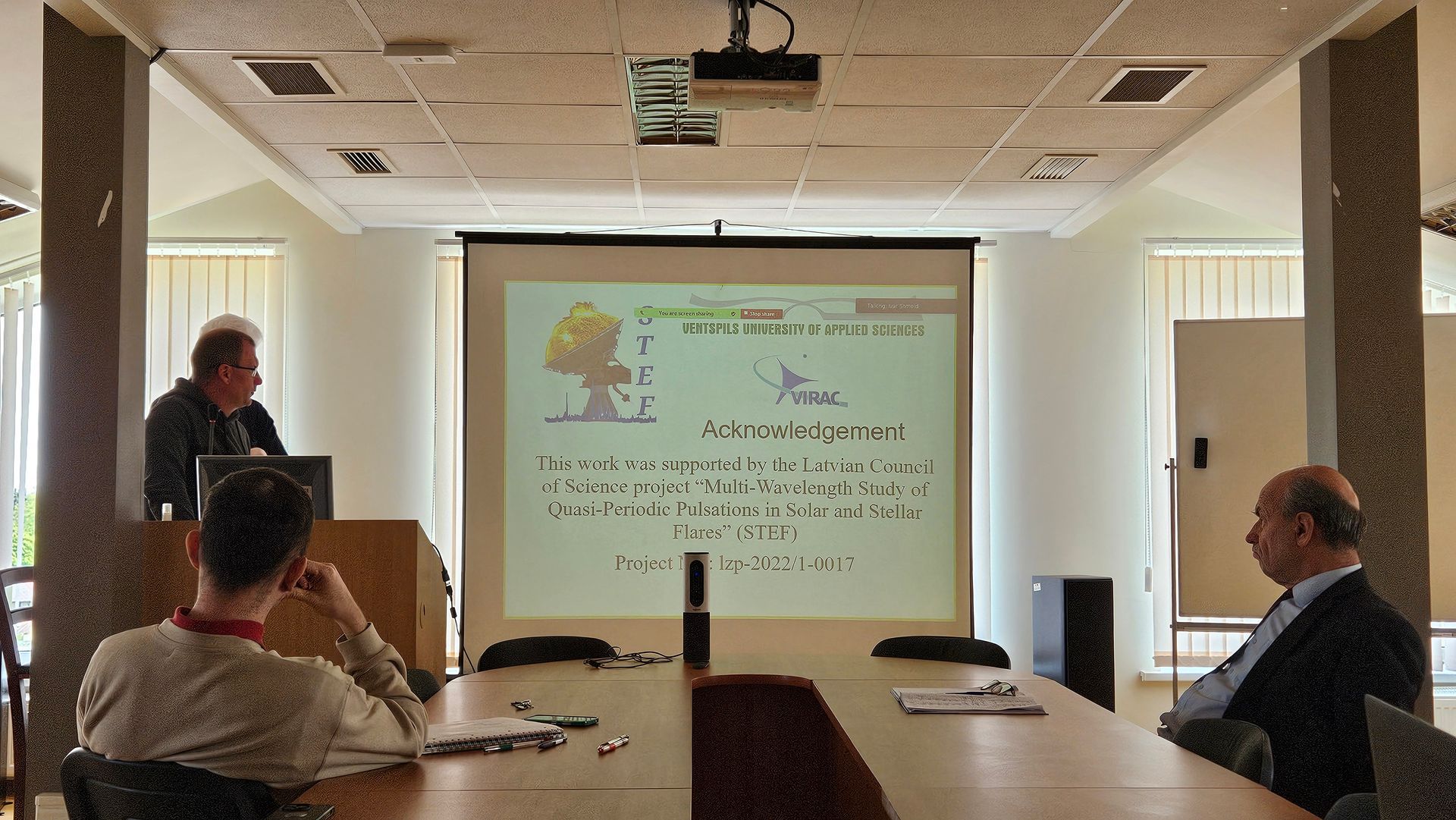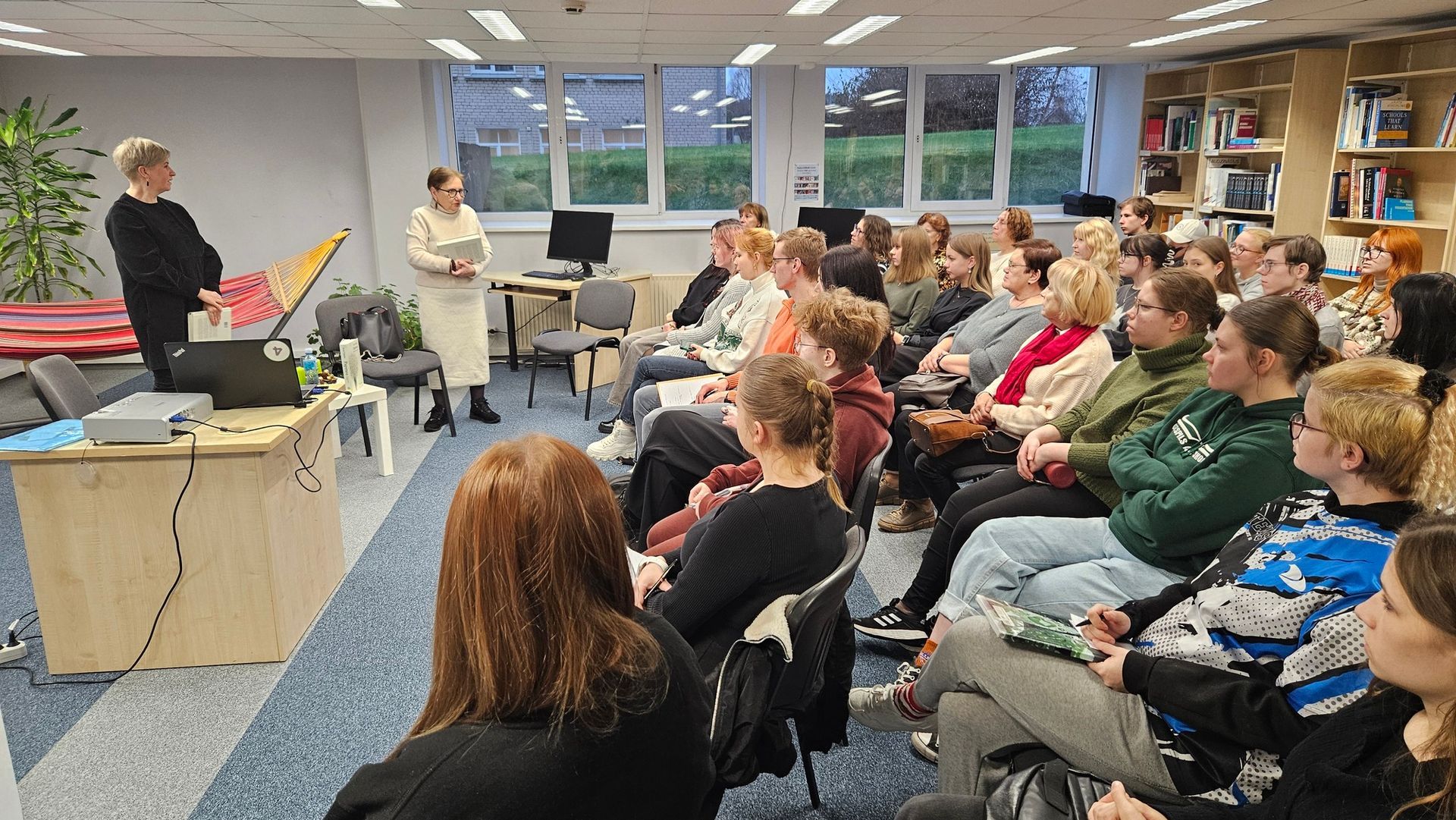Scientific workshop on microwave solar observations at the VSRC STEF project
On 9 May 2024, the Ventspils International Radio Astronomy Centre (VIRAC) hosted a seminar "Microwave Solar Observations within the STEF Project" at Ventspils University of Applied Sciences ( VUAS), where D. Bezrukov and V. Bezrukov gave speech.
Project No. lzp-2022/1-0017 "Study of multi-wavelength quasiperiodic pulsations in solar and stellar flares" (STEF) is supported by the Latvian Council of Science (LSC) and covers various activities in the study of solar and stellar flares and their possible prediction. One of them is the preparation and implementation of microwave observations of the Sun and solar active regions with the RT-32 radio telescope in Irbene. In the ideology of the project, observations of the Sun could be considered as observations of a star ("Sun as a star") and the results could be compared with a whole range of stars.
Solar flares are one of the causes of the known negative effects on Earth and all aspects of human life. In this field, the study and prediction of solar activity, flares and cosmic weather patterns is of great importance, and is growing every year.
The observation and analysis of polarised microwave radiation from the Sun provides unique opportunities to measure and study the induction of magnetic fields and plasma parameters in the solar corona at different altitudes above the photosphere. Solar observations are currently carried out in Irbene with the RT-32 radio telescope equipped with a multichannel spectropolarimeter. The spectropolarimeter is designed to receive and measure microwave fluxes in both circular polarisations in 12 frequency channels simultaneously, covering the 4.1-14.1 GHz (2.3-7.5 cm wavelengths) range. The spectropolarimeter is integrated with a data acquisition system, a time service and an antenna guidance system to perform the observations automatically.
A standard procedure for solar observations and data processing provides information on the intensity and degree of polarisation of microwave radiation over the solar disk, allowing the construction of two-dimensional maps of the Sun.
The report revealed new observations of active regions of polarised microwave radiation associated with detected solar flares.
Presentation available
HERE

Share on other platforms
Other news







